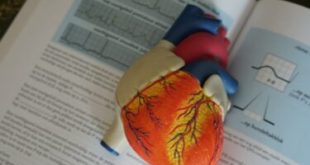Dr Shruthi Reddy, Consultant Hepatobiliary, Pancreatic and Liver Transplant Surgeon at Sakra World Hospital
A year ago, 50-year-old Santhosh (name changed), a farmer from Bangalore was diagnosed with a 16cm large cancerous tumour in his liver. The characteristics of the tumor were peculiar. It nearly replaced the entire right lobe that constitutes 80% of a normal liver, involved all the three blood vessels draining the liver and compressed the inferior venacava- a major blood vessel which takes blood from lower half of the body to the heart. Santhosh, upon initial diagnosis, was deemed inoperable in different hospitals and his expected survival without curative treatment was less than six months.
Cancers in the liver can either arise in the liver itself or can be a spread from other organs. They can manifest as a mass or cause jaundice, weight loss, fever. The most common type of tumor arising from the liver is hepatocellular carcinoma. Although these tumours are treatable, the process can be difficult including surgical resection, targeted chemotherapy or liver transplant.
In Santhosh’s case, upon closely reviewing the CT scan images here, it was found that the tumour could not be operated on following standard techniques, however, there was still scope for removing the tumour along with the involved blood vessels and reconstructing the blood vessels. This also meant removal of the other involved structures like the right part of diaphragm and venacava, both of which have key functions and will have implications on postoperative recovery. This type of supra-major surgery meant there was 5-10% risk of death which was duly informed to Santhosh and his family, they accepted owing to the lack of other treatment alternatives.
The treatment process started with giving catheter-guided procedures to cut off the tumour’s blood supply and decrease bleeding. A further procedure was done to stimulate normal liver, after which he was taken for surgery. This challenging surgery, spanning about 8 hours, involved removal of 75% of the liver with the tumour and reconstruction of the blood vessels that make up the remaining 25%. Among the many types of vessel reconstruction, this was a far more technically complex procedure. Santhosh was discharged home after 12 days and has been doing well for a year now.
Such a technique of reconstruction of blood vessels to remove otherwise inoperable tumours is rarely performed by the majority surgeons since it involves substantial risk to life. However, sometimes such newer techniques and precision surgery can give hope for long-term survival in these otherwise hopeless situations.
Liver cancer care has progressed substantially in the recent years and liver cancer is treatable if diagnosed at an appropriate stage. But protecting oneself through lifestyle modifications, limiting alcohol intake, avoiding tobacco and early-stage diagnosis gives one the best chance.
Tumor shown in pink
Smaller part of liver seen on right in the image was left back after surgery and the green structure within it was the blood vessel that was reconstructed
 Newspatrolling.com News cum Content Syndication Portal Online
Newspatrolling.com News cum Content Syndication Portal Online







